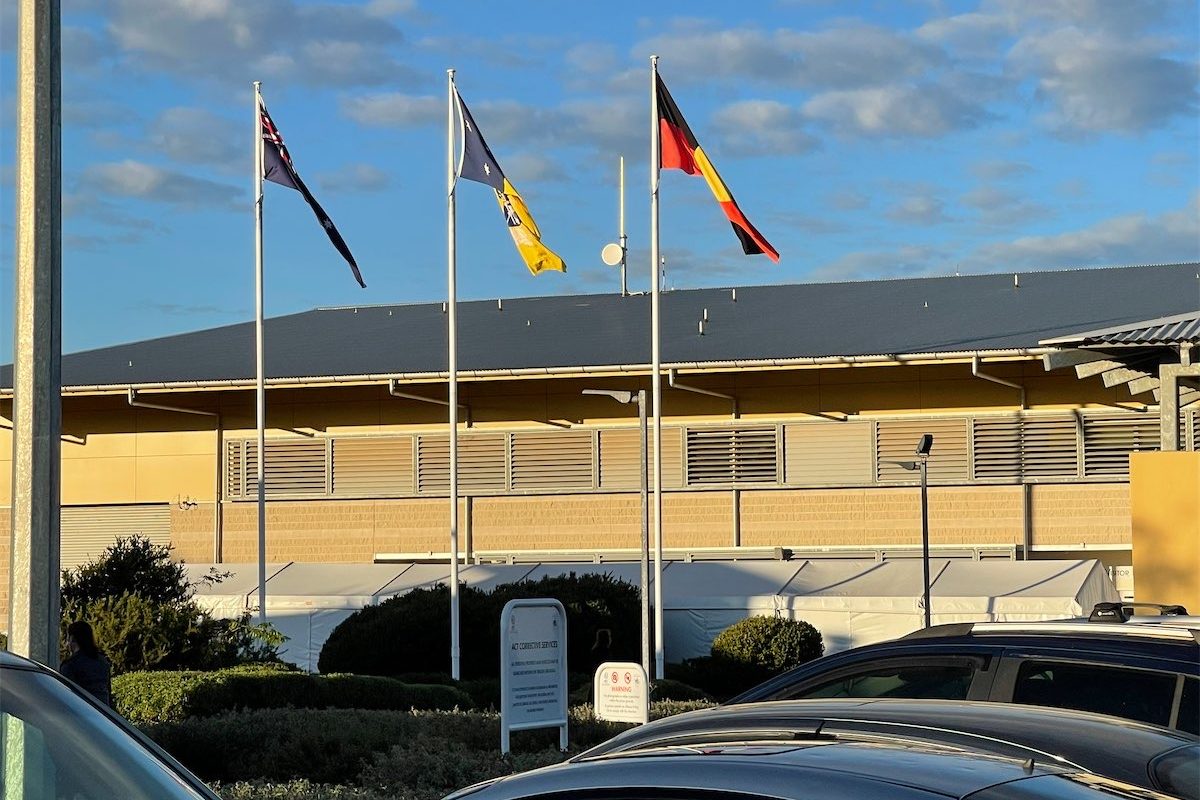How long will it take for the carbon dioxide generated by construction of light rail’s stage 2 to be recouped by the anticipated reduction in private-car use? That was the question architect PENLEIGH BOYD set out to answer…
THE construction of light rail Stage 2 will release vast amounts of carbon dioxide into our atmosphere. CO2 is the greenhouse gas most responsible for the climate change we are now experiencing.

The promoters of light rail assert that the rail system, once constructed, will reduce private-car use and thus overall vehicle emissions.
However, how long will it take for the CO2 generated by construction activities to be recouped by the anticipated lesser private car use?
Due to their current silence on the net carbon benefits of light rail, it would seem the ACT government needs some assistance with the calculations. Here is a starting point.
The primary materials used in construction of light rail are reinforced concrete and steel, for the tracks, and steel poles and wires for the power supply (noting that some sections of light rail Stage 2B will have concealed power).
Reinforced concrete accounts for some 8 per cent of the world’s total annual production of CO2 gas. Environmentally aware communities around the world are endeavouring to reduce its use.
Likewise, steel production accounts for some 1.85 tonnes of carbon dioxide emissions per tonne of steel made equating also to about 8 per cent of total global CO2 emissions.
The following calculations are necessarily broad-brush (not having access to the detailed design). Those with access to the detailed design are most welcome to make their own calculations available to the public.
Emissions from the concrete trackway
Total track route length 10.7 kilometres. With a trackway width of 6 metres and an average depth of 600 millimetres some 40,000 cubic metres of concrete is needed which amounts to 96,000 tonnes of concrete (at 2.4 tonnes per cubic metre). Reinforced concrete generates 80.2 kg of CO2 per tonne (www.sustainableconcrete.org.uk) thus producing 7700 tonnes of CO2 for the tracks alone. Bridging of Lake Burley Griffin involves elevated trackways (presumably reinforced concrete) some 420 metres long adding an estimated additional 970 tonnes of CO2 emissions.
Steel for the tracks
There will be four rails running 10.7 kilometres totalling 42,800 linear metres of rail (minimum). At 50 kg per metre there will be 2140 tonnes of steel rail. Every tonne of steel produced generates 1.85 tonnes of CO2 (www.McKinsey.com) meaning 3959 (say 4000) tonnes of CO2 for the rails alone.
Poles and wires
Pairs of 7.5 metre high steel poles will be spaced at nominally 50 metre centres along the route (assume all overhead wires for the sake of this exercise – if concealed wiring is less CO2 emitting that would be beneficial). 428 poles at 7.5 metres high totals 3210 linear metres of steel pipe. Each pole will be mounted on a concrete pad footing using nominally 1 cubic metre of concrete. 130 tonnes of steel poles plus 428 cubic metres of concrete totals another 320 tonnes of CO2 produced during light rail construction.
Light rail vehicles
Presuming 12 new light rail vehicles made in Spain (as for Stage 1) these vehicles, each weighing more than 40 tonnes, result in some 500 tonnes needing to be shipped half way around the world, using fossil fuels all the way. At least Melbourne is smart enough to make its own trams.
The CO2 produced is beginning to add up. The above does not include the 12 stops and their associated materials, extensive terrain levelling at London Circuit to Commonwealth Avenue, removal of mature trees on Commonwealth Avenue near Albert Hall and a myriad of other light-rail associated construction activities.
As a rough estimate it would seem not unreasonable to expect about 20,000 tonnes of CO2 to be produced by the construction activities associated with light rail Stage 2.
Now, to offset the CO2 produced during construction, how many commuters will need to leave their car at home and catch the light rail?
The equivalent Woden to Civic (or vice versa) car trip takes 15 minutes. A 15-minute car trip generates some 2 kg of CO2 in a modern petrol powered car. Factor in the expected increase of electric-vehicle use and the recouping of construction CO2 will take even longer.
The estimated 20,000 tonnes of CO2 (20,000,000 kgs) produced during construction of the light rail means that some 10 million car trips need to be redirected onto the Woden/Civic light rail for the CO2 produced during construction to be offset.
Remember, the government’s main concern is to attract current car users on to the light rail. Already committed public transport users will simply switch from the present bus service to light rail, resulting in no reduction of private car use by them.
So, if (say) 1000 car drivers a day were to leave their car at home and catch the tram instead, then those 10 million car trips avoided would occur over a period of 5000 days assuming those catching the light rail make a return trip – i.e. two trips per day. Assuming a 5-day working week then 1000 weeks would elapse before the CO2 generated by construction was offset by rail system commuters using the tram instead of their private car.
One thousand weeks is some 19 years. By the year 2040 the light rail should have offset the pollution it caused during its construction. Remember, that is just getting back to zero net effect – no CO2 has yet been saved.
By the year 2040 we are only back to square one. Consider, too, the increasing number of electric cars in Canberra then light rail Stage 2 appears destined to become an overall contributor to CO2 pollution, not the environmental saviour some people have promoted it to be.
Penleigh Boyd is a registered architect who has lived and worked in Canberra since 1976.
Who can be trusted?
In a world of spin and confusion, there’s never been a more important time to support independent journalism in Canberra.
If you trust our work online and want to enforce the power of independent voices, I invite you to make a small contribution.
Every dollar of support is invested back into our journalism to help keep citynews.com.au strong and free.
Thank you,
Ian Meikle, editor





Leave a Reply